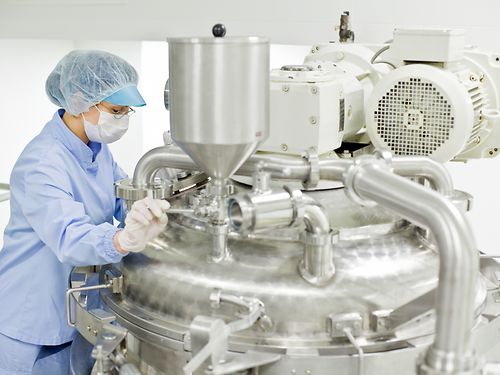 When you think of machinery for industrial use, often images of refineries, oil & gas production sites and other visual images come to mind. But what about the machinery and other equipment in industries with shiny stainless steel everywhere, such as pharmaceutical, biotech and food & beverage manufacturing?
When you think of machinery for industrial use, often images of refineries, oil & gas production sites and other visual images come to mind. But what about the machinery and other equipment in industries with shiny stainless steel everywhere, such as pharmaceutical, biotech and food & beverage manufacturing?
The pumps, fans, and other pieces of process equipment must operate reliably and be part of a comprehensive maintenance program. Emerson’s Dennis Belanger joins other suppliers to the Life Sciences industry in a PharmTech.com article, Optimizing Machine Health.
While preventive maintenance practices are still common:
Continuous monitoring and condition-based predictive maintenance offer the potential to improve efficiency and quality compared to time-based preventive maintenance.
One example to avoid unplanned downtime was when:
…vibration analysis was used to detect misalignment and bearing failure on a chilled water system pump. The pump was required to keep a constant temperature for experimental product.
For this example, Dennis explained that a condition-based monitoring system:
“…detected a failure 120 days in advance, saving batch experiments that, if lost, could have wasted months of time…”
Another performance improvement example he cited was Emerson’s Operational Certainty consulting team:
“…worked with one organization to develop a machine learning system that could detect sensor drift on a temperature sensor for a heat-treat skid. That implementation detected an aberration 60 days in advance, which allowed the organization to save a batch worth over $1 million.”
In both these cases, early warning enabled action to avoid loss of production to improve overall business performance.
Beyond predictive maintenance, Dennis describes prescriptive maintenance being adopted by top performing pharmaceutical manufacturers. It:
…uses analytics tools to “find patterns or anomalies in large amounts of seemingly unrelated data—understanding and evaluating the performance of a process or system rather than measuring the condition of a single piece of equipment.” A corrective action is then “prescribed” to minimize or prevent failure.
Read the article for more on Dennis’ and the other suppliers’ thoughts on condition-based predictive maintenance, predictive analytics, implementation and data integrity.
Visit the Operational Certainty page on Emerson.com for solutions to drive toward Top Quartile performance in the areas of safety, reliability, production and energy management. You can also connect and interact with other pharmaceutical, biotech and operational excellence experts in the Life Sciences and Services groups in the Emerson Exchange 365 community.





